Various Methods of Displaying and Rendering Color Text in Art.

I have only begun to really play with the system of expressing text as abstract color and art but I have been very excited by the primary results in my own ability to “read” this colorful alphabetic system.
Remarks on Color* (an artist book)
Because of my great admiration for the work of Wittgenstein, I have decided to translate his thoughts on colour into color. The printed version of this text measures 7 inches wide by 6 inches tall and is hard-bound, hand-sewn and printed on archival paper with fade resistant pigmented inks. On this, the artist’s proof, I have intentionally “glossed” the work with the translation of the color text on the left column of the book. Although this gives the reader greater accessibility to the work by providing a “key”, I feel that it detracts from the overall effect of the book by removing the validity of the color text to stand on it’s own.
I intend on producing a limited edition series of this work over the summer because of the surprising quality of the finished “artist’s proof” that I have completed, (assuming the publisher grants me the right to distribute this version). The prototype PDF version with selectable color text is available at: <http:www.denison.edu/~faurc/color/RemarksOnColoursm.pdf>
(original handmade artists book based on the text “Remarks on Color*” by Ludwig Wittgenstein)
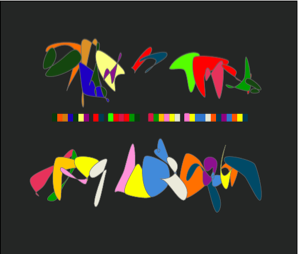
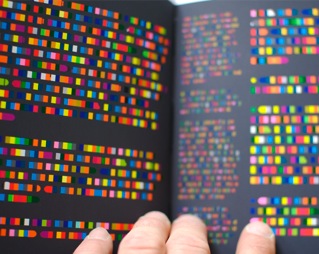
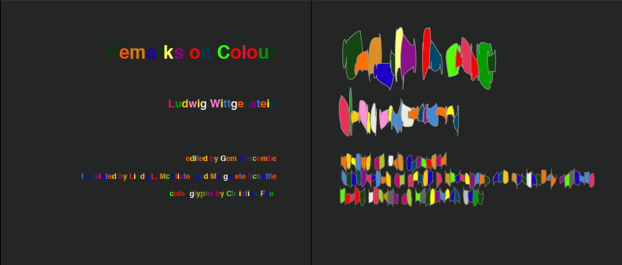

Layout for the first few pages and a close-up of a sample insert page.
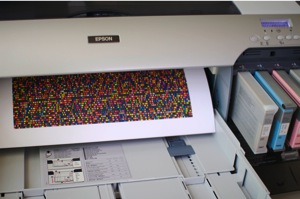
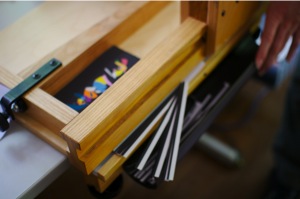
*Wittgenstein, Ludwig. Remarks on Colour, Trans. Linda L. McAlister, Margarete Schättle. Berkeley: University of California Press, 1977.
Color Word Paintings
These paintings are biased on sentences with meaning but are rendered in vertical strips of color. The width of the color strips will conform to the sound of someone naturally speaking. This will be done by recording a person reading the phrase in a normal voice and then identifying the places in the visual waveform that maps to the beginning of letter-sound. For silent letters (e or y) I will minimize the width to the smallest width in the frame and for groups of letters that make one sound (ch, sh) I will divide the entire sound length in half and then render these strips at equal in width.
These paintings will form the foundation for the over-painting which will further inform the textural data in the painting.

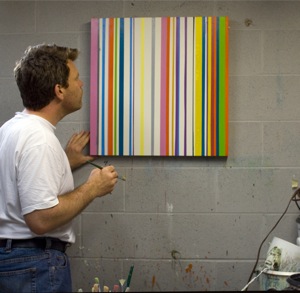
Test painting (oil on board).
I am working on the under-painting. (right)
Concept where work is headed (below).
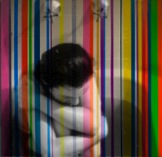
Crayon Language Works
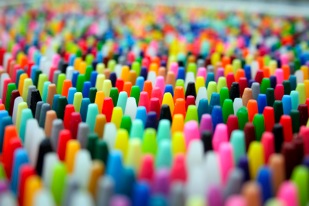
Hamlet’s Soliloquy English
(Act III Scene 1)
“To be or...” translated into a grid of
crayon color to be read from left to right and
top to bottom. Spaces are composed
of colorless wax crayons.


“The Wind, the Wind”
handmade crayons stacked in panels
The introductory paragraph to the fairy tail
“Hansel and Gretel” by the Brothers
Grimm translated into English written in color text.
Jitter program using text to speech and a video display of color text.
I will a set of texts with opposing ideas and separate them into a series of sentences. (This work could also be done in realtime with relevant online blogs or an RSS aggregator.)
The program will pick a sentences at random and then display the color patterns associated with the entire phrase on a screen as vertical bars of color. The computer will then read the associated phrase while the vertical lines that represent the text appear to change randomly in width. Once the text is read it will fade out softly and be replaced by a random passage from the opposite text. This will continue on throughout the installation.
Porcelain Work
As one can now acquire porcelain of many different colors, it would be interesting to go back to the idea of imbedding language and ideas into this archival medium. The rendering of the text could take many forms from functional pots and containers to hand build works.